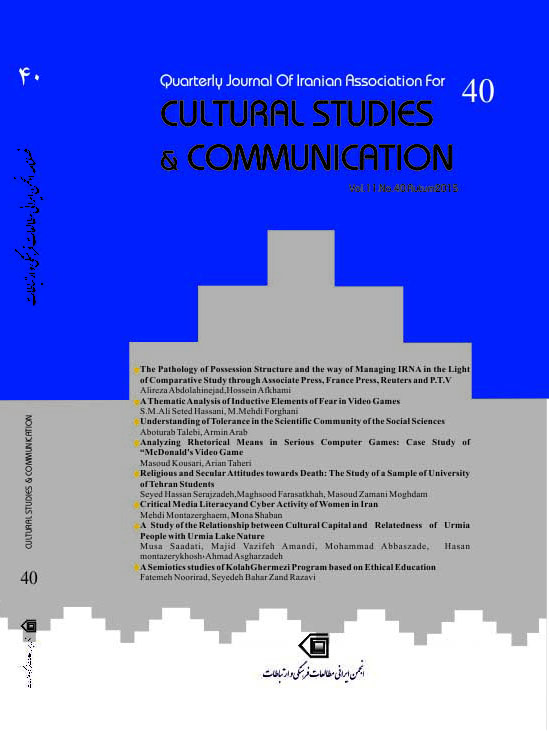Document Type : Original Article
Authors
Abstract
Lake Urmia is the biggest lake in the Middle East and the second salty water lake in the world. Drying away has threatened this lake in recent years. Drying up of this lake can affect the nature, economy, population structure and, and in general entity of region. But the problem which is brought up beside Lake Urmia problem is that to what extent the people are related to the nature of this lake. Do people engage with this lake and its critical situation mentally, physically and practically? They are indifference? The answer to this question and also, finding the correlation between cultural capital and citizens relatedness with Urmia Lake have been the aims of this research. The method of this research is survey, and a standard questionnaire used in gathering data. Population consists of all Urmia citizens aged 15 and older. 384 people were selected through Cochran formula and random sampling. The results ,that analyzed by Spss software, shows that relatedness with Lake Urmia is high and mentioned variable correlates with two aspects of cultural capital. Additionally, rest of the independent variables in regression model can provide 23 percent of changes in dependent variable ,relatedness, with the nature (Lake Urmia).
Keywords
